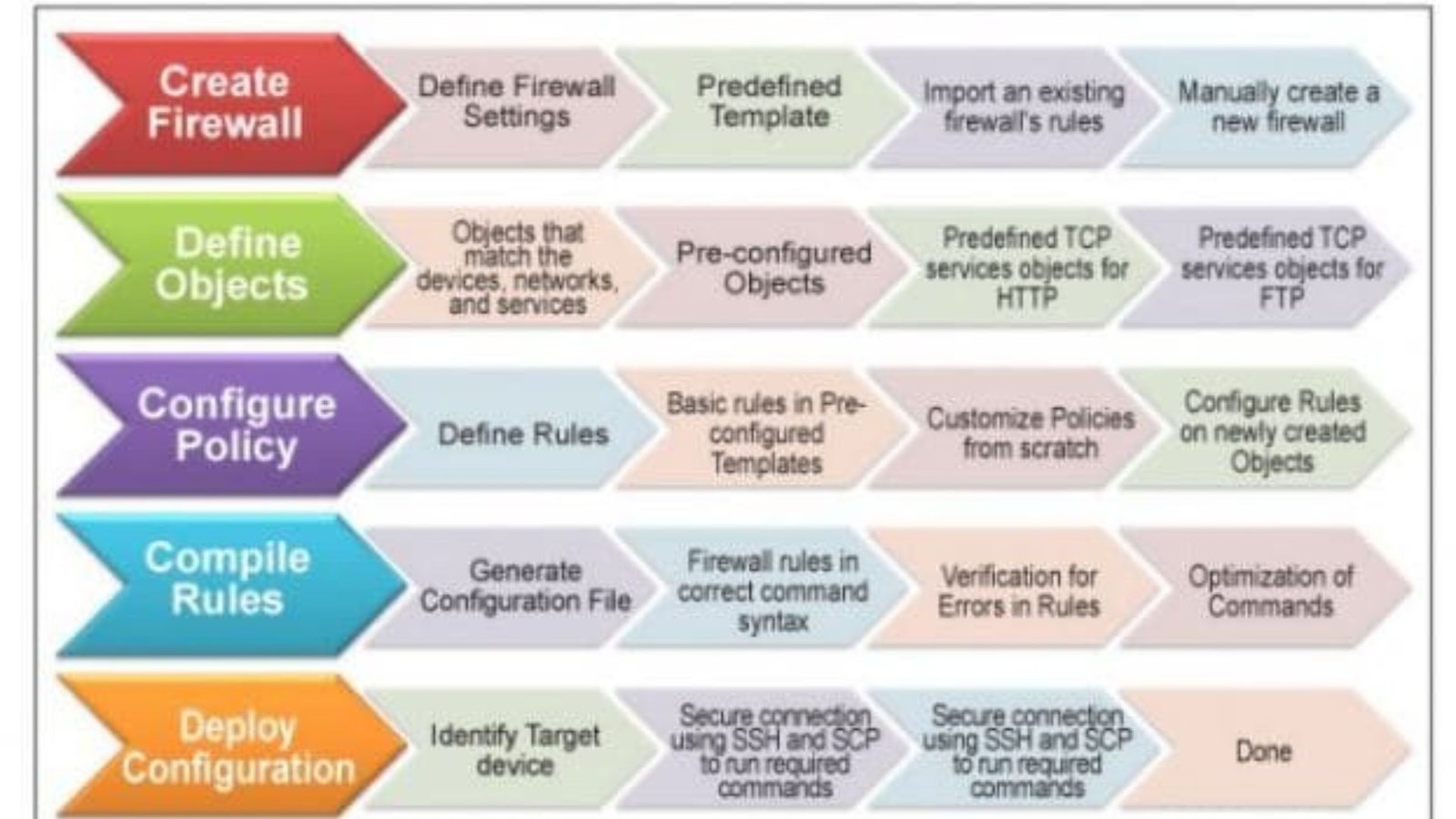Firewalls are a critical component of any network security strategy. Proper configuration can significantly enhance your system’s protection against unauthorized access, cyber threats, and data breaches. This article outlines the best practices for configuring your firewall to ensure robust security.
1. Understand Your Network Structure
Before configuring your firewall, it’s crucial to have a clear understanding of your network architecture. Identify the different segments of your network, such as internal, external, and demilitarized zones (DMZ). Knowing your network’s layout allows you to set up firewall rules that appropriately control traffic flow between these segments.
2. Define Clear Security Policies
Developing and implementing clear security policies is essential for effective firewall configuration. Determine which types of traffic should be allowed or blocked based on your organization’s security requirements. This includes specifying acceptable sources, destinations, and protocols. Ensure these policies are documented and regularly reviewed to adapt to changing security needs.
3. Implement the Principle of Least Privilege
The principle of least privilege dictates that only the minimum necessary access should be granted to users and systems. Apply this principle when configuring your firewall by allowing only the required traffic through the firewall. Block all unnecessary ports and protocols to reduce the attack surface.
4. Use Stateful Inspection
Stateful inspection, or dynamic packet filtering, is a method used by firewalls to monitor the state of active connections. By inspecting packets at multiple layers of the network, stateful firewalls can make more informed decisions about which packets to allow or block. Ensure that your firewall uses stateful inspection to provide a higher level of security.
5. Regularly Update Firewall Rules
Firewall rules should not remain static. As your network evolves and new threats emerge, it’s important to regularly update and review your firewall rules. Conduct periodic audits to remove outdated rules and ensure that current rules align with your security policies. This helps to prevent potential vulnerabilities that could be exploited by attackers.
6. Enable Logging and Monitoring
Enabling logging on your firewall is crucial for maintaining visibility into network traffic. Logs can provide valuable insights into potential security incidents, such as unauthorized access attempts or unusual traffic patterns. Use monitoring tools to analyze these logs in real-time and set up alerts for suspicious activities. This proactive approach allows for quick responses to potential threats.
7. Segment Your Network with Firewalls
Network segmentation involves dividing your network into smaller, isolated segments to limit the spread of threats. By placing firewalls between these segments, you can control the flow of traffic and contain potential breaches within a specific area. This practice enhances security by preventing attackers from easily moving laterally within your network.
8. Configure Firewall Redundancy
To ensure continuous protection, it’s important to configure firewall redundancy. Implement failover solutions where a secondary firewall automatically takes over if the primary one fails. This redundancy minimizes downtime and ensures that your network remains secure even in the event of hardware or software failures.
9. Test Your Firewall Configuration
Regular testing is essential to verify that your firewall configuration is working as intended. Conduct penetration testing and vulnerability assessments to identify weaknesses in your firewall setup. Simulate attack scenarios to see how well your firewall defends against potential threats and make necessary adjustments based on the test results.

10. Educate Your Team
Finally, ensure that your IT staff and network administrators are well-versed in firewall management and best practices. Regular training sessions can help your team stay up-to-date with the latest firewall technologies, configurations, and security threats. A knowledgeable team is better equipped to maintain a secure network environment.
Conclusion
Configuring your firewall properly is crucial for maintaining a secure network. By understanding your network structure, defining clear security policies, and regularly updating your firewall rules, you can significantly enhance your protection against cyber threats. Implementing these best practices will help you create a robust firewall configuration that safeguards your organization’s data and resources.










